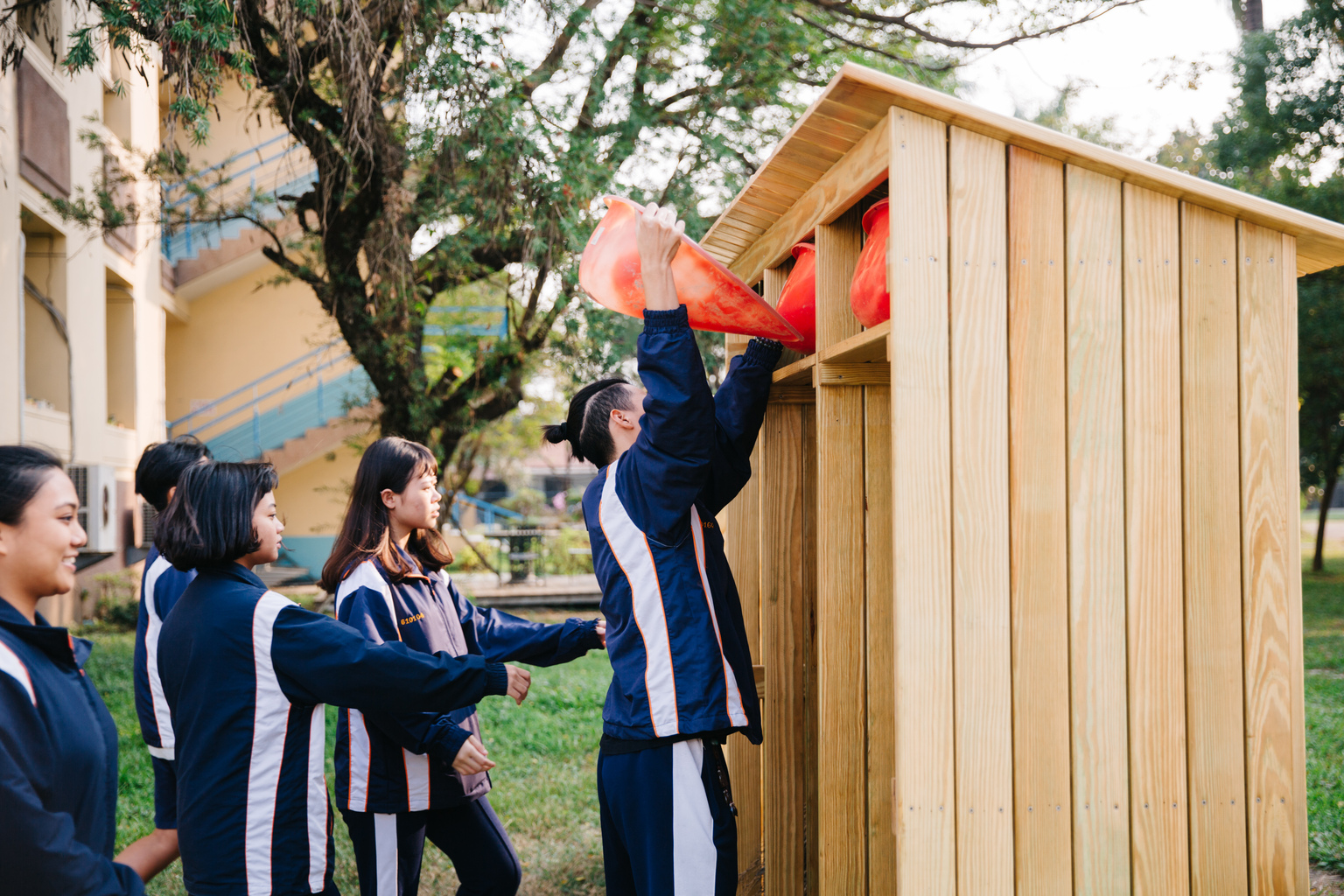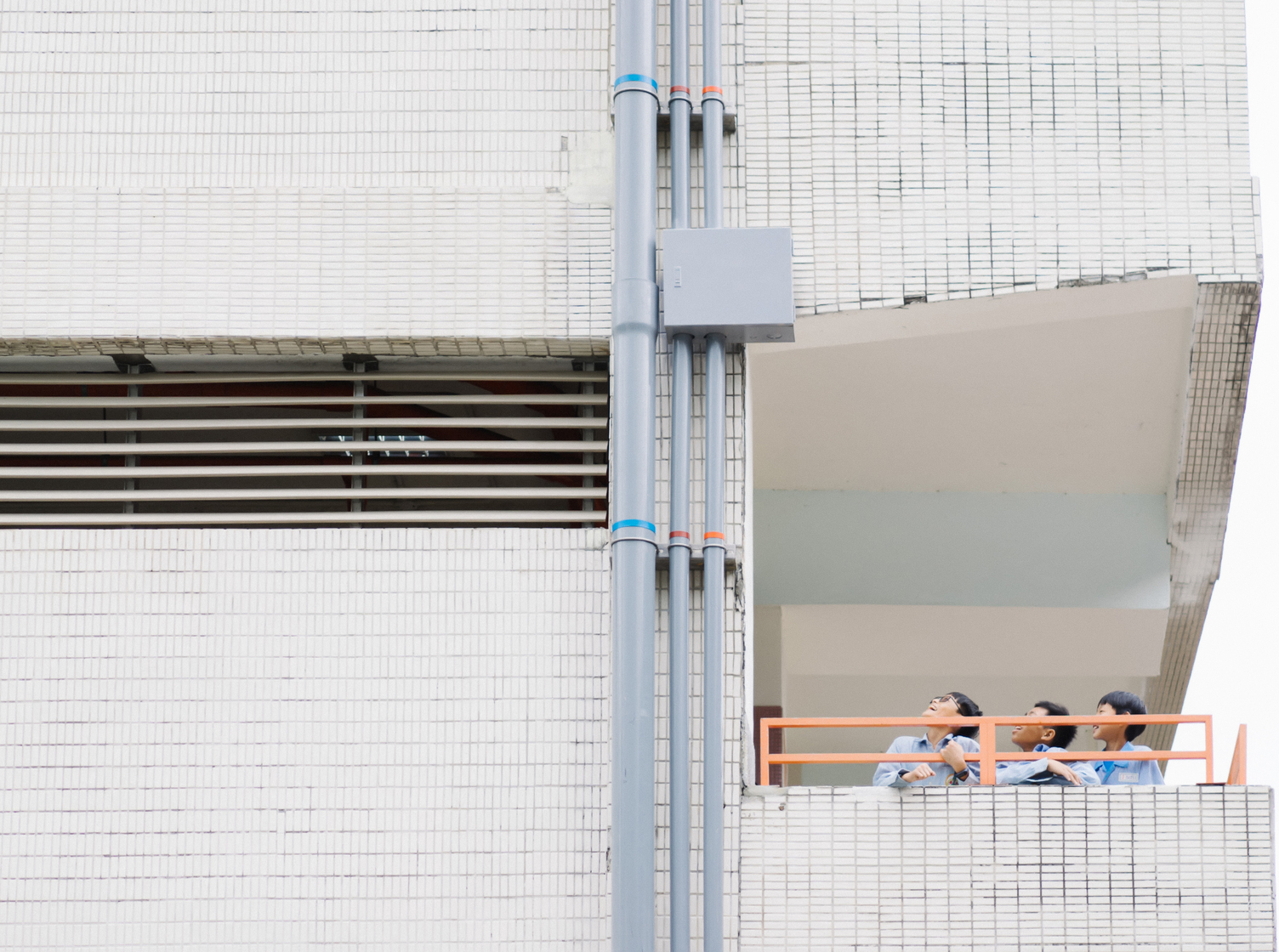Remove the Pile of Junk in the Hallway and Turn Campus into the Practice Field of Life Aesthetics
-Exclusive Interview with Principal Wang Yu-Ching of DaTong Senior High School
Design is not just a problem-solving tool, it is capable of changing behaviors. Regarding this, DaTong Senior Highly is probably the best example after its hallways and outdoor areas took on a brand-new look after it participated in “Design Movement on Campus” in 2019.

Remove the Pile of Junk in the Hallway and Give the Hallway back Its Space
DaTong Senior High School is the largest complete high school in Pingtung City; including both junior high school and senior high school divisions, the school has an area of 7 hectares. However, despite its large area, the school had quite a lot of miscellaneous things, and students usually placed cleaning tools, garbage cans, and recycling bins in the hallway, making the hallways crowded and messy. “When I first came here in 2018, I was concerned with this problem, and asked the general affairs director to check out other schools and see how we could make improvement, but we never found a good solution,” said Principal Wang Yu-ching of DaTong Senior High School.
Coincidentally, Wang Yu-ching received the official letter on “Design Movement on Campus” from the Ministry of Education, and quickly decided to apply as she was worried that there were various areas in the school that needed renovation. Interestingly, the original target of renovation applied by Wang was the bridge connecting the junior high school division and senior high school division; however, after onsite inspection by TDRI and advisors, she accepted their recommendation to shift the focus of the renovation.
“At the time, advisors from TDRI found out that there were garbage cans and recycling bins in the hallway, and they were filled with garbage. Looking from afar, it seemed like the students were attending classes in a junk yard, and it was not a good sight, nor was it ideal for health and sanitation, so they suggested that, rather than renovating the bridge, we might as well make improvement to the more dire issue of the storage system,” smiled Wang Yu-ching. “After hearing their suggestion, I just realized that the storage system was also a part of campus design! It was an issue that had bothered me for a long time, so it was great to use the opportunity to solve the problem.”
Upon confirming the target of improvement, the design team, “NDD Design Tainan,” began planning based on the conditions of the campus. NDD Design Tainan removed the garbage cans outside each classroom, and set up recycling stations on both ends of the senior high school building, and each station is shared by three classes; design wise, the garbage can is placed inside modularized garbage cabinet for easy cleaning and removal; label wise, unlike the laminated papers indicating “garbage” and “paper” used by the school in the past, NDD Design Tainan switched to simple symbols, making the visual effect cleaner and refreshing.


Consider the Natural Conditions of the South to Blend Storage Design of Cleaning Tools into Campus
After the problems of garbage cans and recycling bins were solved, NDD Design Tainan’s next challenge was another roadblock in the hallways—“cleaning tools.” NDD Design Tainan set up storage areas in outdoor cleaning areas, and, with the greenery on campus in mind, as well as the sunny and humid climate in the south, NDD Design Tainan chose suitable wood materials for the storage stations so that they blend into the campus environment.
At first glance, the project ended with the completion of the construction, however, to the school, the real teaching challenge only began. “With the storage stations, students no longer have to carry the cleaning tools from their classrooms to outdoor areas. To them, it is very convenient, and they responded well to this change; however, when it comes to disposal of garbage, even though many people feel that the hallways have become spacious and clean after the removal of garbage cans outside the classrooms, some student find it too much trouble to take their garbage to the ends of the hallways,” smiled Wang Yu-ching. “Regarding this, we decided to give autonomy to the classes, having the three classes that share one station to formulate user rules. Slowly but surely, the classes have figured out a way to dispose and remove garbage on their own.” Through this opportunity, the school not only educates the students on participation in and care for public affairs, but also encourages the teachers to use the improvement case of garbage stations as teaching material, educating students on topics from daily garbage classification to global environmental protection.
“To us, campus is the pantheon of knowledge transmission, as well as the enlightening site of life aesthetics. Here, equipment is not just equipment, for we must give it educational meanings,” said Wang Yu-ching. “’Design Movement on Campus’ was a great starting point, and it is our job to take advantage of this opportunity and facilitate behavioral changes in students.”




